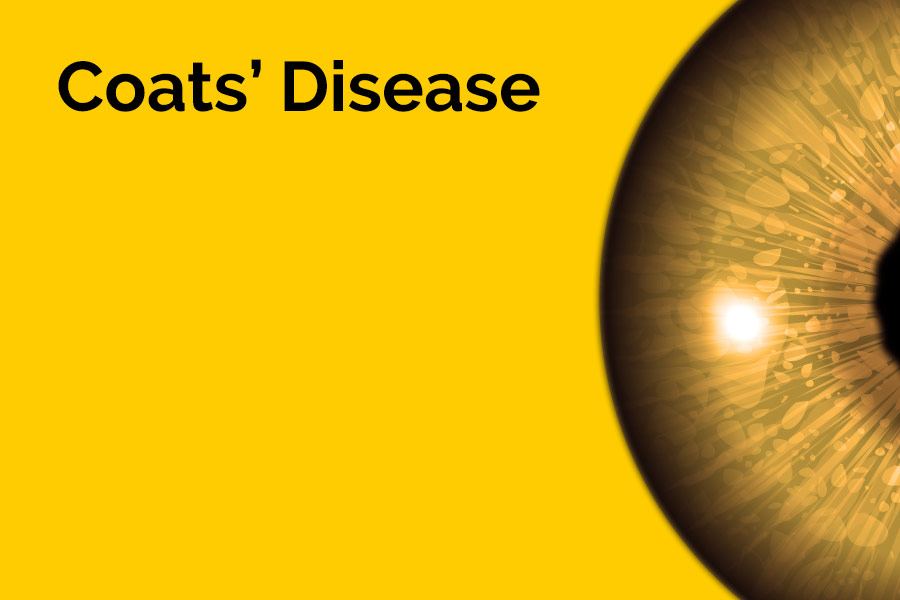Coat’s Disease
Coats’ disease (also known as Exudative Retinitis) is a rare eye condition affecting the capillaries found in the retina. In Coats’ disease, the blood vessels are dilated and abnormally twisted causing them to leak fluid and blood under the retina. If a large amount of fluid builds up, it can lead to a detachment of the retina causing the sight to be affected.
Coats’ disease is most common in children and teenagers under the age of 18 but most often occurs before the age of 10.
Symptoms
Coats’ disease causes a gradual decrease of vision which may not be recognised at first due to the young age at which the disease appears. Since it often starts in one eye, the child may compensate well and not notice that the vision in their other eye is deteriorating.
It general Coats’ disease only occurs in one eye and is more common in males. When just one eye is involved, the individual may carry out almost all tasks but may have some limitations if binocular vision is required. This is generally not noticed by the individual or their parents. Although depth perception is still present, it may be decreased significantly.
Diagnosis, Screening and Tests
An eye examination is the only way to identify if your child has an eye condition. All children should have their eyes tested when they begin full time at school.
If you are concerned about your child’s vision it is vital that you book them an appointment with an optician. If the optician observes anything out of the ordinary they will refer your child to the eye clinic at the hospital.
At the eye clinic, your child’s eyes will be checked by an ophthalmologist. This will involve putting drops into your child’s eyes to make their pupils bigger and to allow them to get a better view when looking at the retina. They will shine a bright light into your child’s eye to look at the retina. It is normal for your child to find this light to bright and uncomfortable however this screening will not cause any damaging effects to their eye health.
Sometimes the ophthalmologist may want to perform a test known as a Fluorescein Angiogram. This involves injecting a dye into the blood vessels of your child’s arm, which travels through their bloodstream and into their eye. When the dye reaches the eye the ophthalmologist will take a series of photographs which will show the blood vessels of their retina filling with dye. These photographs will allow the ophthalmologist to identify if the capillaries are leaking and be able to tell you if your child has Coats’ disease.
Treatments
Treatment is usually directed towards destroying affected blood vessels in the retina and recovering as much vision as possible. Cryotherapy (a procedure using extreme cold to terminate abnormal blood vessels) and/or photocoagulation (a procedure using laser energy to heat and destroy abnormal tissue) are often used to treat the condition. These procedures are often used in the early stages of the condition alongside steroids and other medications used to control inflammation and leaking from blood vessels.
Surgical treatments may be used in more advanced cases. For example, in cases of a retinal detachment, surgery to reattach the retina may be required. Draining or surgically removing the fluids that fill the eyeball between the lens and the retina may also be used to treat Coats’ disease when retinal detachment occurs.
